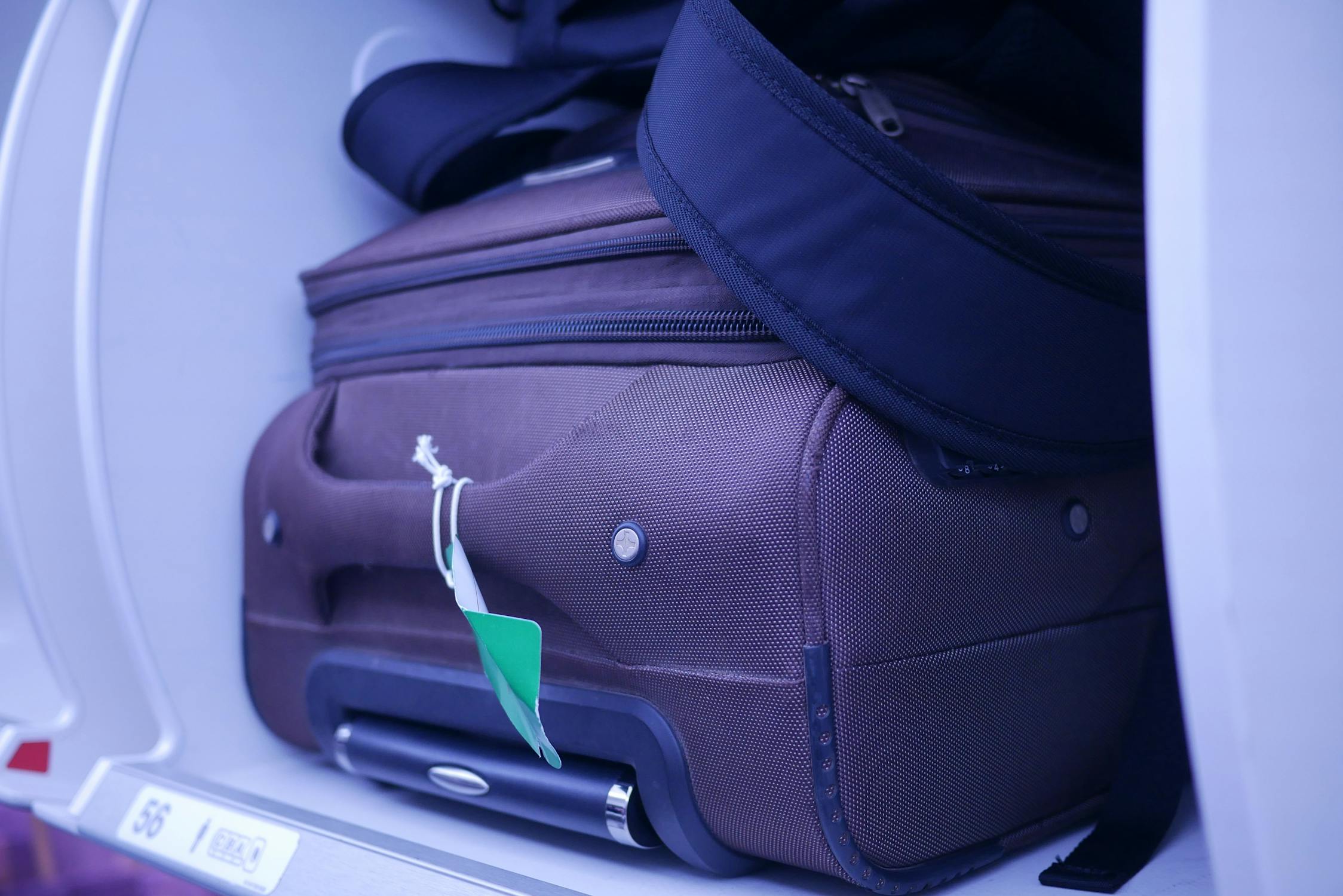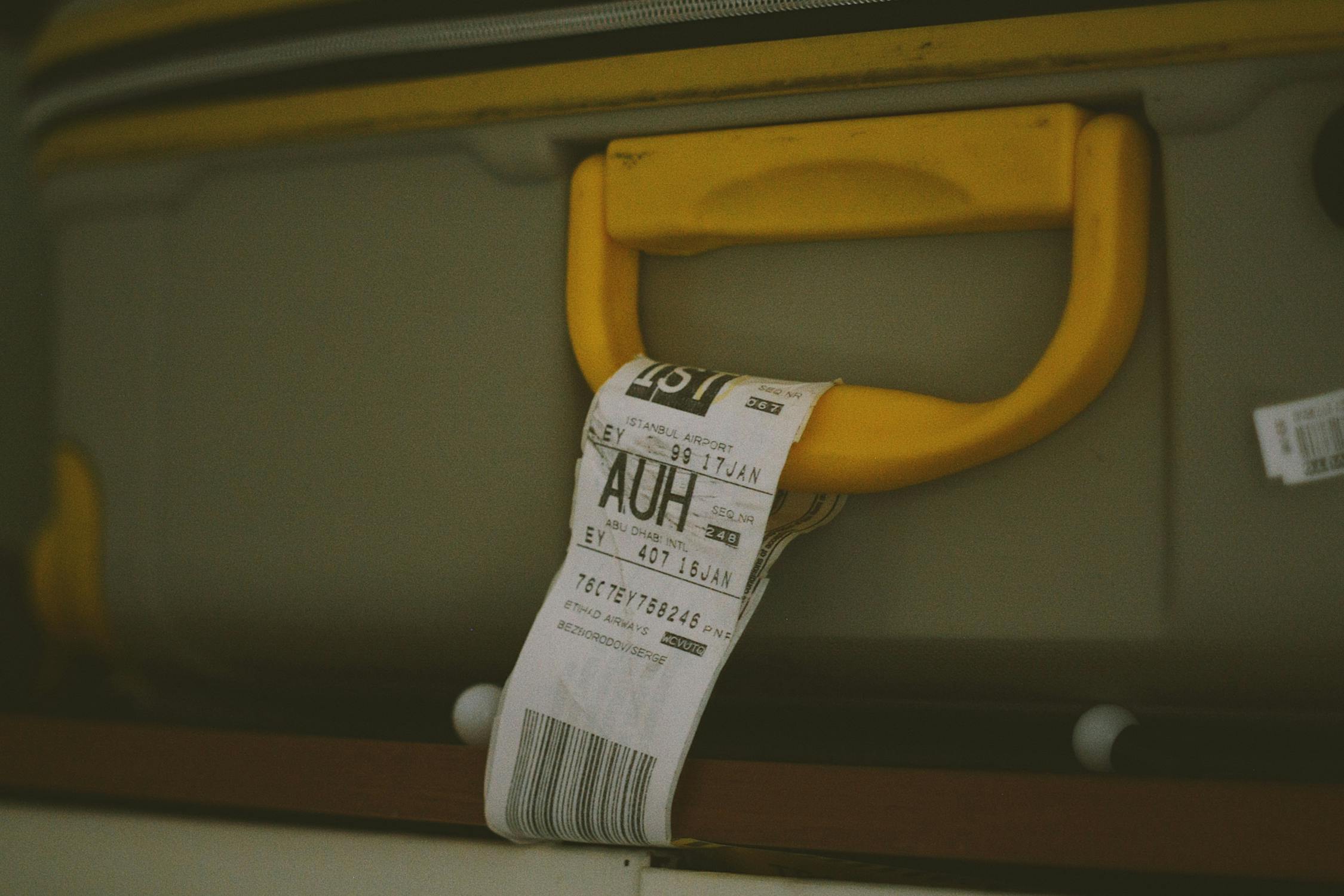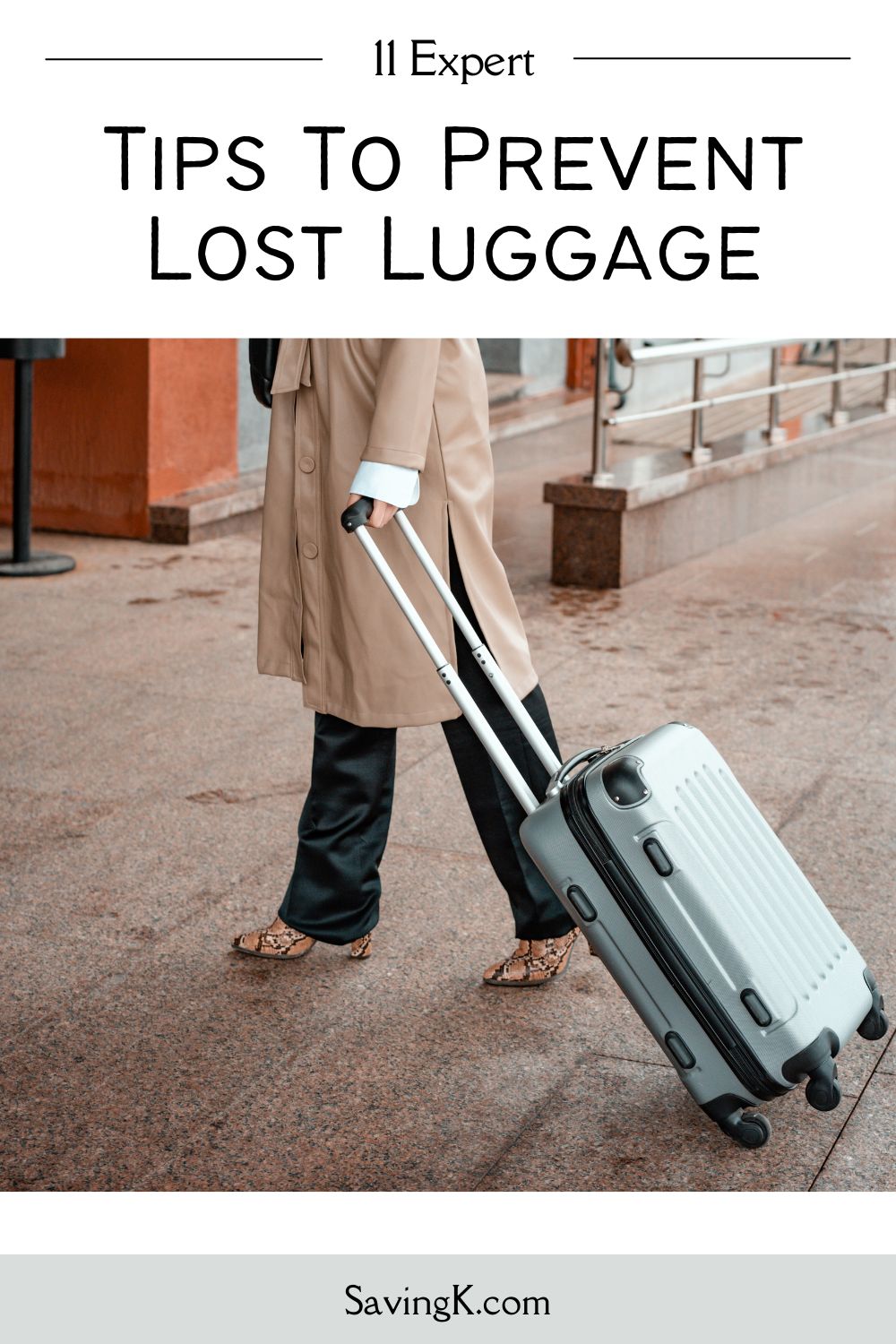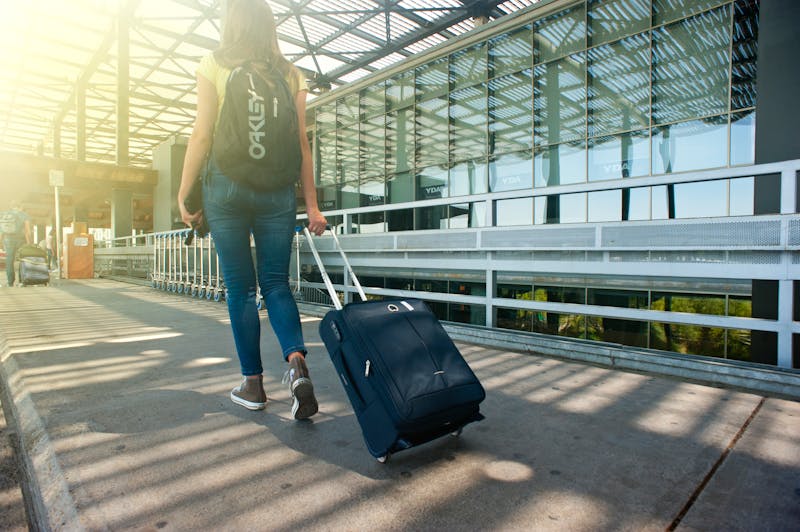
Did you know that airlines mishandle approximately 25 million bags every year? That’s roughly 8.7 bags per 1,000 passengers, and while most eventually find their way home, the stress and inconvenience of lost luggage can turn any dream vacation into a nightmare.
Contents
- 11 Tips On To Prevent Lost Luggage
- 1. Use Luggage Tags
- 2. Label the Inside of Your Luggage
- 3. Remove Old Tags and Stickers
- 4. Choose Direct Flights
- 5. Arrive Early and Check In Luggage Timely
- 6. Use Tracking Devices
- 7. Provide Detailed Bag Descriptions
- 8. Avoid Loose Straps and Tags
- 9. Pack Essentials in Carry-Ons
- 10. Be Persistent with Follow-Ups
- 11. Consider Shipping Luggage
- How To Prevent Lost Luggage Conclusion
11 Tips On To Prevent Lost Luggage
As someone who’s logged countless miles in the air and lost my luggage too many times to count, I’ve learned that preventing lost luggage isn’t just about luck – it’s about strategy. The good news? A few smart precautions can dramatically reduce your chances of becoming another lost luggage statistic.
1. Use Luggage Tags
Let’s talk about one of the most crucial steps in preventing lost luggage – proper luggage tagging. I’ve seen countless travelers skip this simple yet essential precaution, only to regret it later. Every piece of your baggage needs a sturdy, well-secured tag containing your key contact details.

When filling out your luggage tag, include your name, phone number, and email address. Here’s a pro tip: avoid putting your home address on external tags for security reasons. Instead, I recommend using durable, high-quality tags that won’t tear or fall off during handling. Those flimsy paper tags the airlines provide? They’re fine as a backup, but not as your primary identification method.
Make sure your tags are clearly visible and securely attached to your bag’s handle. This simple step can make all the difference between a smooth trip and a lost luggage nightmare.
2. Label the Inside of Your Luggage
Ever wondered what happens if those external tags get ripped off during handling? That’s where inside labeling becomes your safeguard. I always recommend placing a comprehensive identification card inside your suitcase with your contact details and travel itinerary. Think of it as your luggage’s backup plan.
Here’s my tried-and-true method: Place a clearly written card with your name, phone number, email, and flight details in a visible spot inside your bag – I usually secure it in an inside pocket or right on top of my belongings. This way, even if your external tags disappear during transit, airline staff can still identify your lost luggage and get it back to you quickly.
3. Remove Old Tags and Stickers
Here’s something many travelers overlook – those old airline tags and stickers from previous trips need to go. This can lead to serious routing issues. Those outdated tags aren’t just unsightly; they’re potential trouble magnets.

Imagine your bag getting scanned and the system picking up an old routing barcode instead of the current one. This simple oversight could send your luggage off course. Before every trip, I make it a point to thoroughly inspect my bags and remove any lingering tags, stickers, or barcodes from previous travels. It’s a small effort that can prevent major headaches down the line.
4. Choose Direct Flights
When booking your next flight, here’s a travel tip I swear by: opt for nonstop flights whenever possible. In my years of travel experience, I’ve noticed that direct flights significantly reduce the risk of lost baggage. Why? Simple – your luggage stays on one plane from departure to arrival, eliminating the chance of mishandling during connections.
Think about it: every time your bag needs to be transferred between planes, there’s another opportunity for something to go wrong. Connection times can be tight, airport staff might be overwhelmed, or weather delays could throw off the entire system. That’s why I always tell my readers that straight flights can be worth the peace of mind, especially when traveling with valuable items or on important trips.
5. Arrive Early and Check In Luggage Timely
I can’t stress this enough – arriving early at the airport is crucial for preventing baggage mishaps. Rushing through check-in is one of the most common reasons for luggage going astray. When you arrive with plenty of time to spare, airline staff can properly tag and route your bags without the pressure of an imminent departure.
Aim to arrive at least two to three hours before international flights and 90 minutes for domestic ones. Last-minute check-ins result in bags being hastily processed or even missing the flight entirely. Remember, when you’re rushing, mistakes happen – whether it’s incorrect tagging by harried staff or your bags not making it to the aircraft in time. Early arrival gives you peace of mind and your luggage the best chance of reaching your destination with you.
6. Use Tracking Devices
In today’s tech-savvy world, luggage tracking devices have become game-changers for travelers. I’ve tested numerous options, and devices like Apple AirTags and Tile Pros have proven incredibly reliable for keeping tabs on checked bags. These small but powerful trackers use GPS and Bluetooth technology to help you monitor your luggage’s location in real-time through your smartphone.
Before investing in a tracker, though, make sure it prevents your luggage from getting lost. Some airlines have specific rules about battery-powered devices in checked baggage. I personally prefer Bluetooth trackers as they’re generally accepted by most airlines and offer excellent battery life.
The peace of mind these devices provide is invaluable. When your bag makes an unexpected detour, you’ll know exactly where it is, making recovery discussions with airline staff much more productive.
7. Provide Detailed Bag Descriptions
Having a detailed description of your luggage can make all the difference when things go wrong. I always recommend keeping a thorough record of your bag’s specifics – from the manufacturer and model to its exact dimensions and distinctive features. Simply saying “it’s a black suitcase” isn’t enough; you need to note unique identifiers like that scuff mark on the corner or that colorful ribbon you tied to the handle.
Here’s my tried-and-true approach: take clear photos of your luggage from multiple angles before your trip, and create a detailed inventory of your packed items. Store these photos and lists on your phone – they’re invaluable when filing a lost luggage claim or describing your bag to airline staff. I’ve seen countless cases where travelers who maintained detailed records recovered their bags much faster than those who didn’t.
8. Avoid Loose Straps and Tags
Those dangling straps and hooks on your luggage might seem harmless, but they can cause serious problems in baggage handling systems. Loose straps are like magnets for trouble – they can get caught in conveyor belts, snag on other bags, or tangle in automated sorting systems.
Before heading to the airport, I always do a quick inspection of my bags. Any loose straps? Tuck them in securely or remove them completely. Those decorative tags hanging by threads? Either secure them properly or take them off. This simple check has prevented luggage getting lost and saved many travelers from the heartache of damaged or delayed luggage.
Remember, a streamlined suitcase moves through the baggage handling system much more smoothly, significantly reducing the risk of your bag going astray or getting damaged during transit.
9. Pack Essentials in Carry-Ons
Let me share one of my most important travel rules: always pack your essential items in your carry-on luggage. I’ve learned this lesson the hard way, and now I never check items I can’t live without. Your carry-on should include medications, important documents, valuable items, and at least one change of clothes.
Think about it – if your checked bag goes missing, what would you absolutely need for the next 24-48 hours? That’s what belongs in your carry-on. I’ve seen too many travelers stuck without crucial items while waiting for their delayed luggage to arrive. Trust me, having your essentials within arm’s reach can transform a potentially stressful situation into a minor inconvenience.
Remember, while airlines usually locate missing bags eventually, having immediate access to your must-have items ensures your trip isn’t derailed by luggage delays.
10. Be Persistent with Follow-Ups
Despite our best prevention efforts, sometimes luggage does go missing. When this happens, immediate action is crucial. I always advise travelers to file a report to the airline staff before leaving the airport – specifically at the airline’s baggage service office. Make sure to get a reference number and the direct contact information for following up.
Polite persistence is key when dealing with lost luggage situations. I recommend checking in daily with the airline, using multiple communication channels – phone, email, and social media if necessary. Keep all your documentation handy, including those bag photos and descriptions we discussed earlier. While it might be frustrating, maintaining a professional and courteous tone typically yields better results. Remember, airline staff are more likely to go the extra mile for passengers who treat them respectfully, even in stressful situations.
11. Consider Shipping Luggage
Sometimes the best way to ensure your belongings arrive safely is to bypass airline baggage handling altogether. Shipping luggage ahead can be particularly valuable for extended trips or when traveling with essential items that you can’t risk losing.
During peak travel seasons or when heading to important events like weddings or business conferences, I often recommend using dedicated shipping services. While USPS and FedEx are reliable options, specialized luggage shipping companies offer additional benefits like door-to-door service and enhanced tracking capabilities.
What I like about shipping luggage is the control it gives you over your belongings’ journey. This may help your airline from losing your bags. You can schedule exact pickup and delivery times, track your items continuously, and often get better insurance coverage than airlines offer. Plus, you’ll breeze through the airport without dragging heavy bags around.
How To Prevent Lost Luggage Conclusion
Lost luggage prevention isn’t just about following a single tip – it’s about implementing a comprehensive strategy that protects your belongings at every stage of your journey. From proper tagging and tracking to smart packing decisions, each step plays a crucial role in ensuring your bags arrive safely at your destination.
Remember, while we can’t control every aspect of air travel, we can take proactive steps to protect our belongings. By following these proven strategies, you’ll significantly reduce the risk of lost luggage and travel with greater peace of mind. After all, your dream vacation should be about making memories, not tracking down missing bags.





